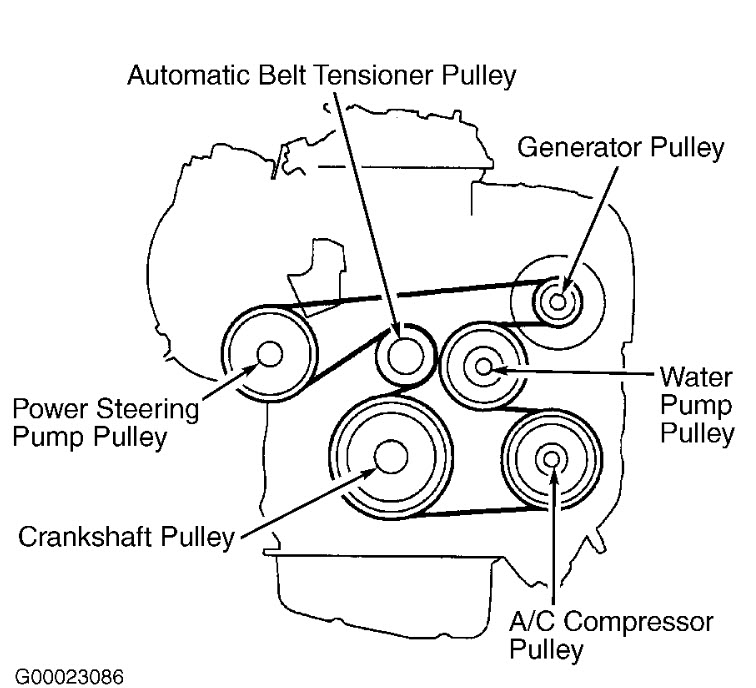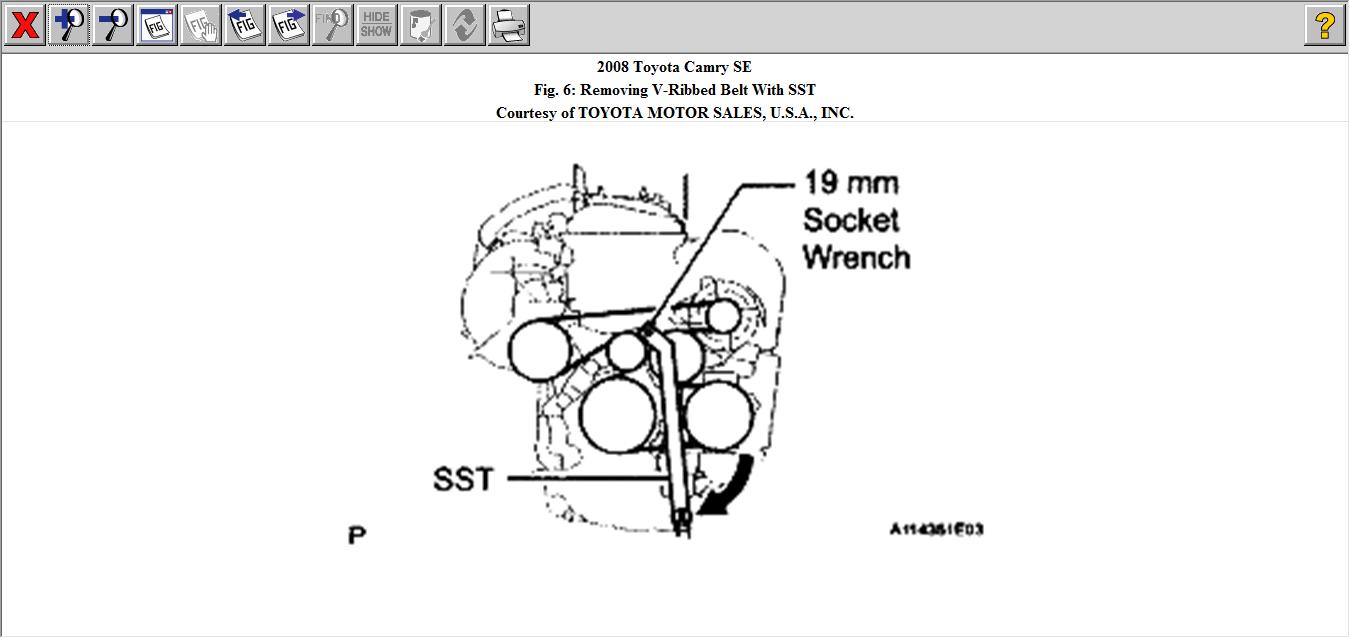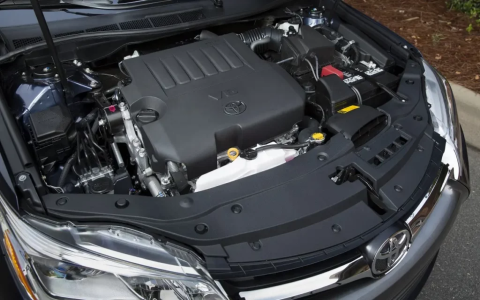For the 2008 Toyota Camry, serpentine belt routing depends on the engine. Identify your engine type first:
4-Cylinder Engine (2.4L 2AZ-FE) Belt Routing Diagram & Information
- Part Number: 6PK1880 (e.g., Gates K060880)
- Routing Path:
Crankshaft Pulley (Bottom Left) → Water Pump Pulley (Smooth Idler underneath Power Steering Pump) → Power Steering Pump Pulley → Alternator Pulley → Smooth Idler Pulley (Top Right) → Tensioner Pulley → A/C Compressor Pulley → Crankshaft Pulley (Top Groove).

Tensioner Release: Rotate tensioner clockwise (as viewed from the front) to release belt tension. Use a 3/8" drive breaker bar or ratchet on the tensioner arm square drive. Do not pry against the pulley.
V6 Engine (3.5L 2GR-FE) Belt Routing Diagram & Information
- Part Number: 6PK2260 (e.g., Gates K062260)
- Routing Path:
Crankshaft Pulley (Bottom) → Coolant Pump Pulley (Left Side) → Power Steering Pump Pulley → Idler Pulley (Small, often ribbed, Top Left) → Alternator Pulley → Tensioner Pulley → Air Conditioning Compressor Pulley → Crankshaft Pulley.
Tensioner Release: Rotate tensioner counterclockwise (as viewed from the front) to release belt tension. Use a 14mm or 1/2" drive socket on the tensioner bolt head. Do not pry against the pulley.
Critical Safety & Installation Tips
- Engine OFF & Key Removed: Ensure ignition is completely off and keys are out.
- Proper Rib Alignment: Verify belt ribs seat correctly in all pulley grooves. Avoid twisting.
- Smooth Side Out Check: After routing, confirm the belt's smooth backside contacts only the tensioner and idler pulleys (where applicable). Ribbed side must engage the grooved pulleys.
- Release Tensioner Slowly: Slowly release the tensioner after installing the belt. Sudden release can cause slippage or injury.
- Inspection: Replace cracked, glazed, frayed, or missing rib belts. Inspect all pulleys for damage, severe wobble, or seized bearings.
Consult your specific engine bay sticker or owner's manual supplement for official diagram confirmation before proceeding. Verify fit and tension immediately after installation.


